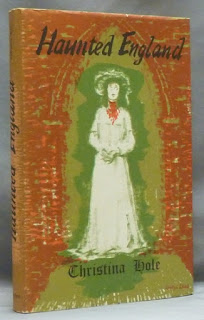In 1937 Sydney Glanville wrote to Arthur Foyster hoping to be put in touch with his brother Lionel. No longer living at Borley Rectory and by that time residing in Ipswich and pretending to be his wife's father after she had been married bigamously to a younger man (it's a long story - see The Widow of Borley) Lionel was badly afflicted with arthritis and wasn't keen on receiving visitors. The reply from Arthur to Glanville is interesting however for further light it sheds on investigations at the rectory:
'... Your letter much surprised me, as I had understood from my brother that during the last years of his stay at Borley the phenomena had entirely ceased. Prof. Cook of Cambridge, whom I met at Aldeburgh, told me that he had been to Borley and investigated the matter, while the phenomena were supposed to be active, and found there was nothing in it.
I am afraid that I know nothing about it at first hand but I am writing to my brother to ask him whether he would care to send you any details. He is now crippled with rheumatism and I would fancy that writing is rather an effort, so he may not want to do so.
Prof. Cook was apparently rather keen on these sort of things and only came to the conclusions he did after a very thorough investigation of the full particulars he got and with great disappointment.
... PS I never mentioned to my brother that I met Prof. Cook as I understand that Cook's conclusions very much annoyed him.' (quoted in Robert Wood The Widow of Borley pp.128-9)
What is interesting is that I can find no mention of Prof. Cook's investigations in any of the Borley literature, even the supposedly comprehensive The Borley Rectory Companion (2009). This collection of material comes down pretty firmly on the belief side, although it does feature most of the countervailing evidence and arguments.
Some other links of possible interest: Lionel and Marianne: a Psychiatric Interpretation here.
BBC documentary with the great Borley believer and chronicler Peter Underwood here.
An extract from Michael Aspel's memorable series Strange But True here.
Film of Harry Price here.
BBC radio documentary on Harry Price here.
The London Buzz – 14th July 2025
4 hours ago












